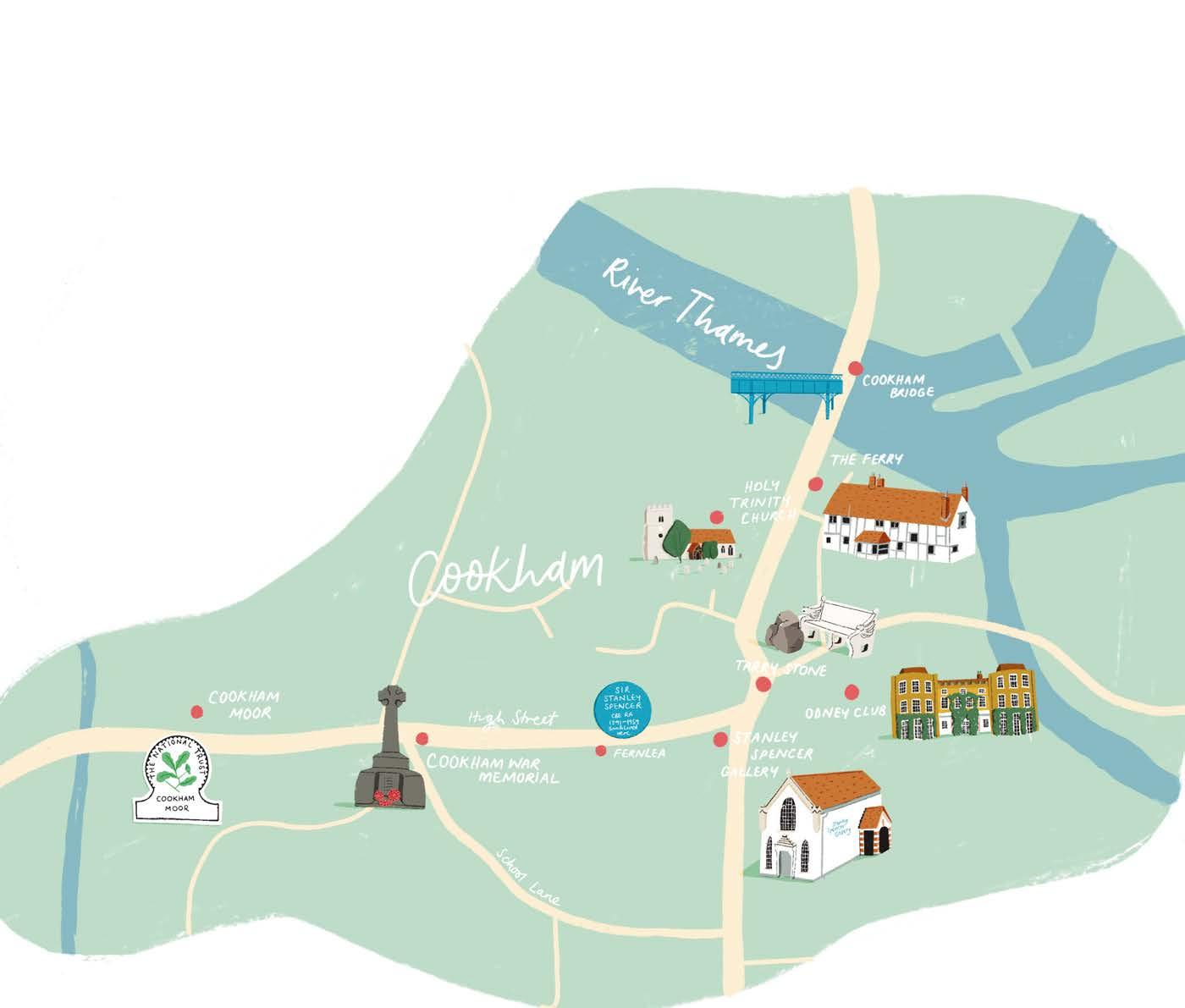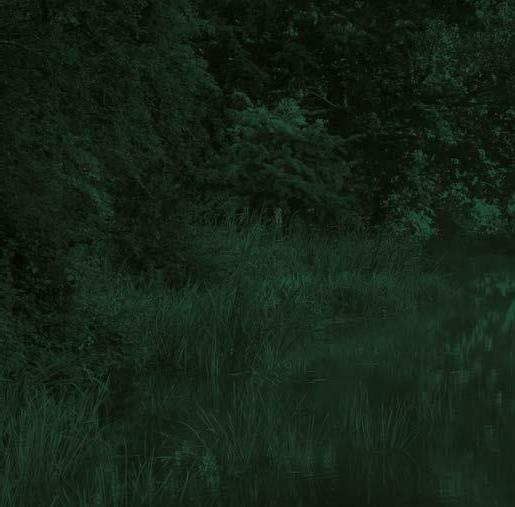
10 minute read
Art Walks
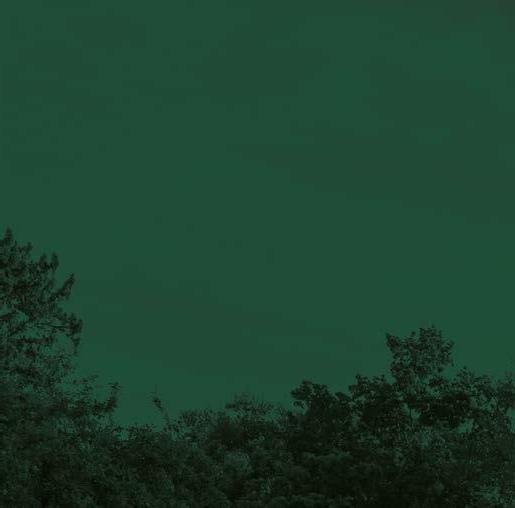
The Art of Walking
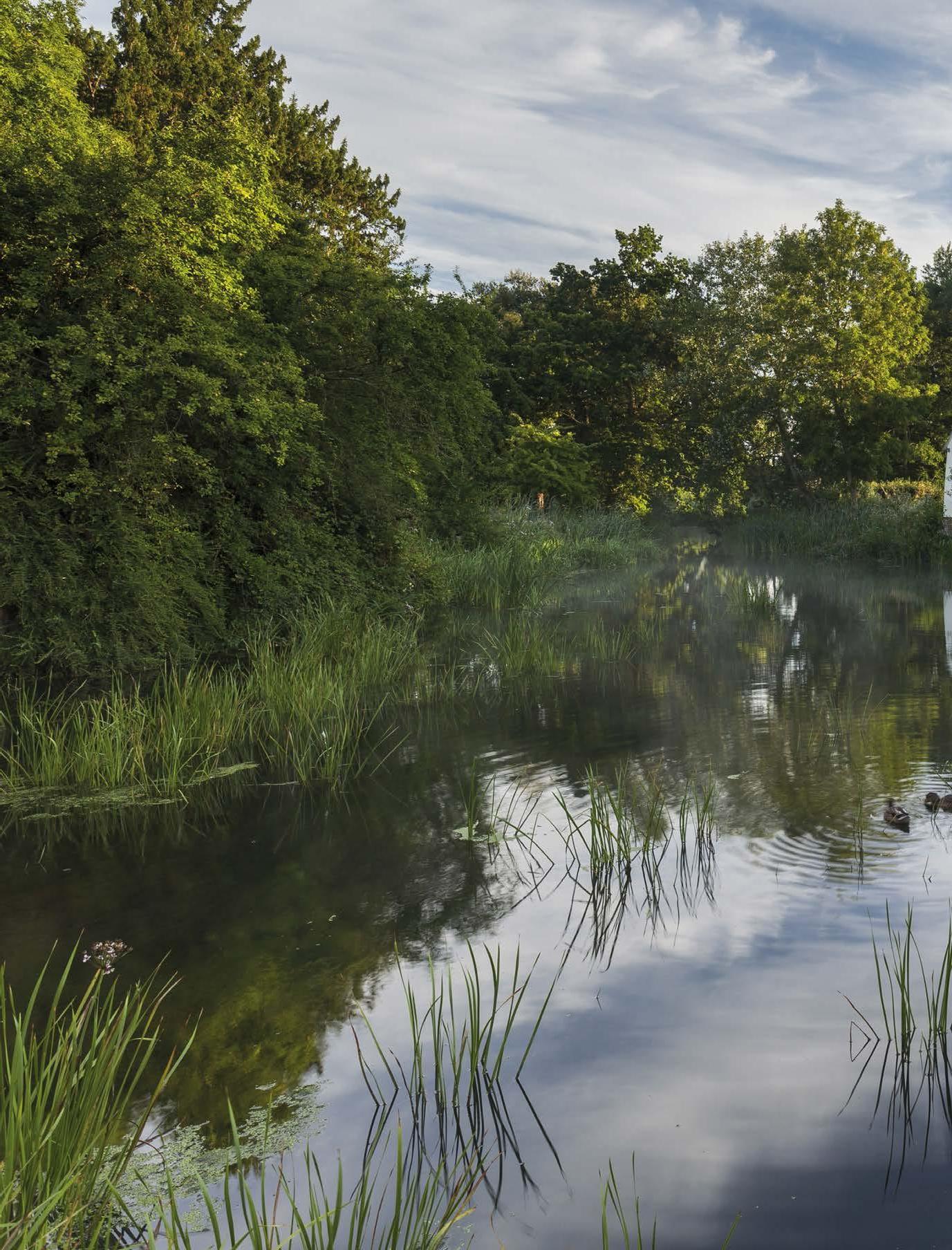
Discover the landscapes that seduced three of the nation’s greatest artists with walks through verdant valleys, beside the riverbanks of the Thames and along the rugged coast of north east England


Willy Lott’s Cottage on the River Stour in Suffolk, which is featured in several John Constable masterpieces
©NATIONAL TRUST IMAGES/JUSTIN MINNS
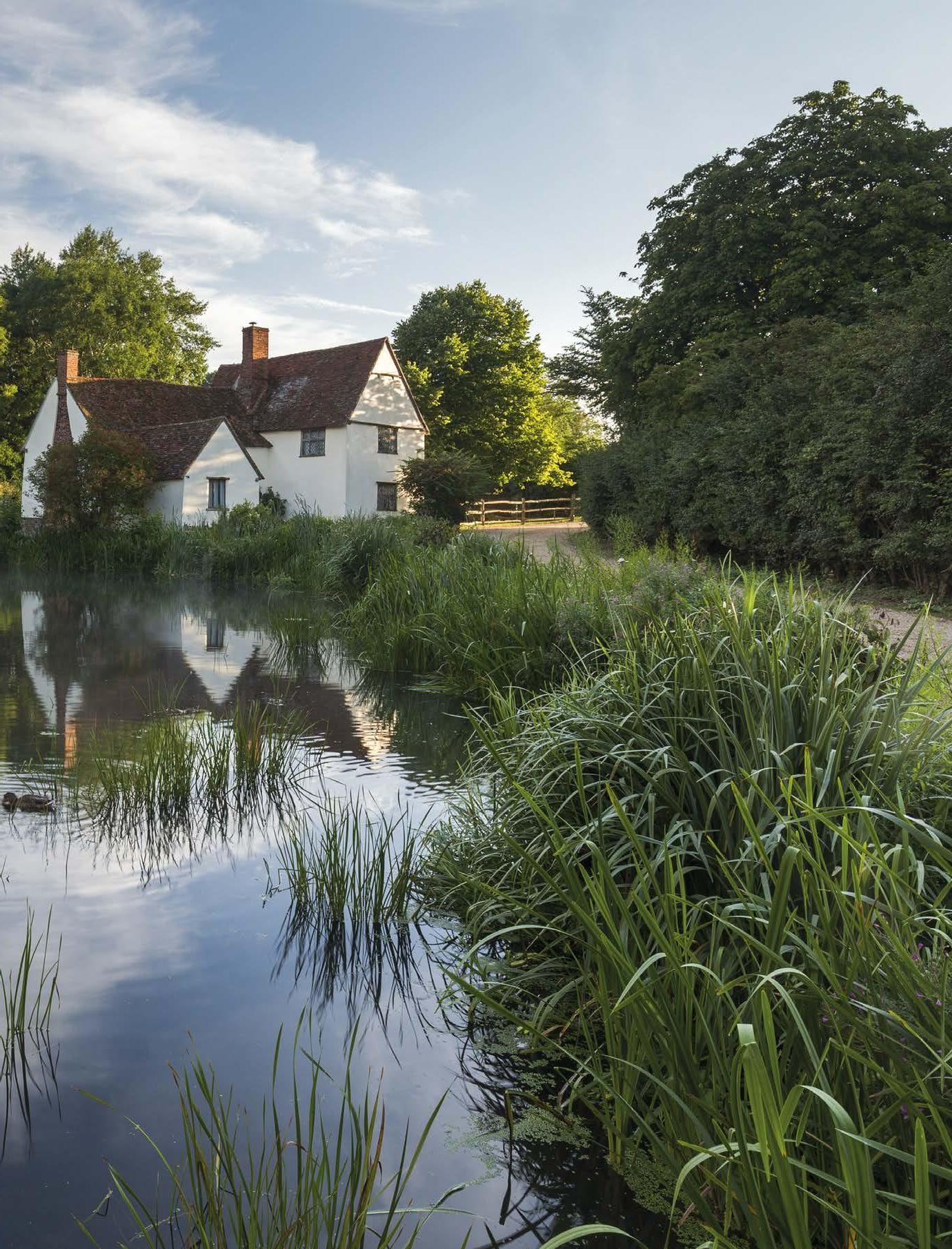
John Constable, The Leaping Horse, 1825, oil on canvas, 142x187.3cm
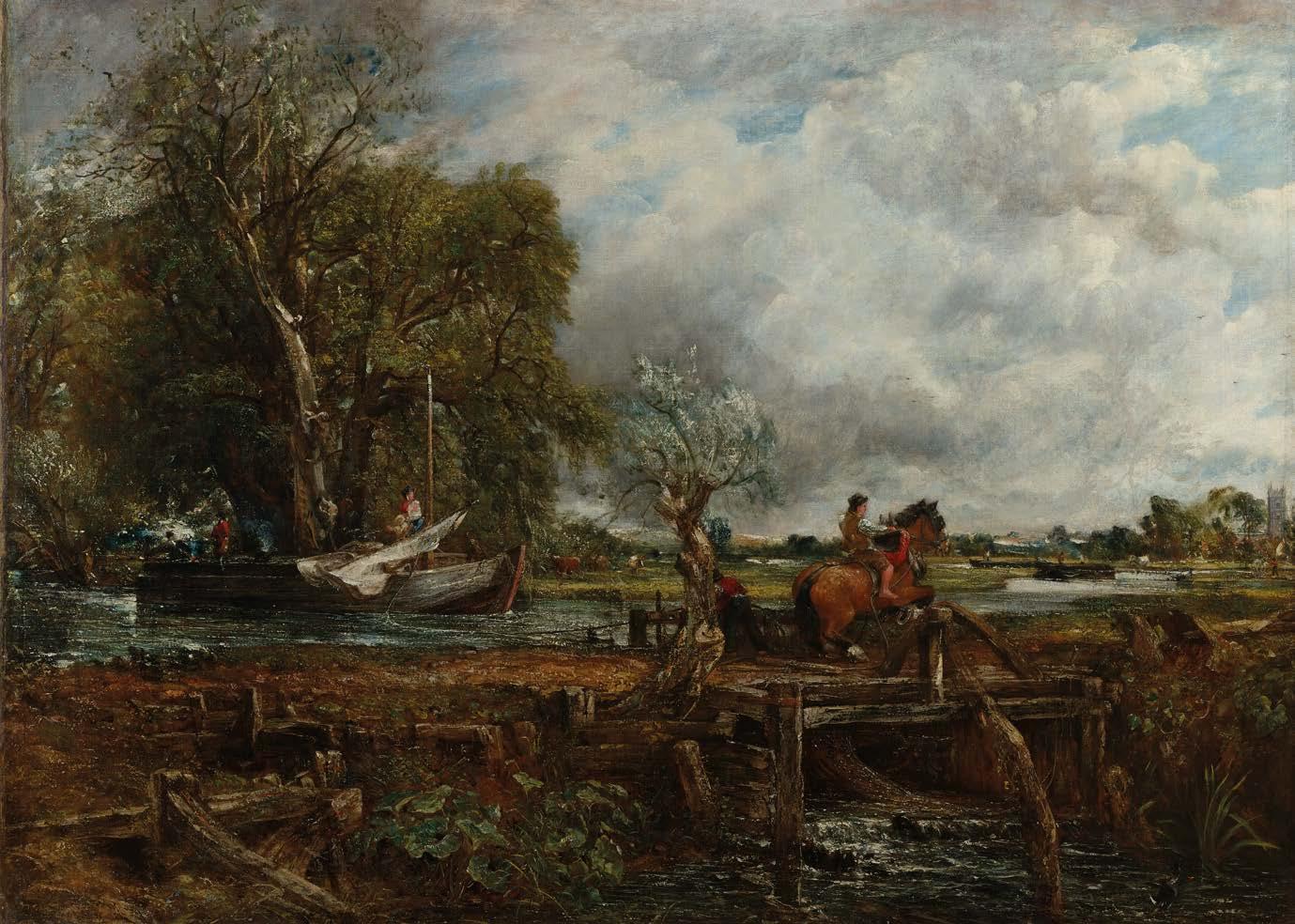
CONSTABLE’S
Key Dates

1776 Born in East Bergholt, Suffolk 1799 Entered the Royal Academy Schools 1802 Started exhibiting at the Royal Academy of Arts 1816 Married Maria Elizabeth Bicknell 1819 Moved to London 1821 Exhibited The Hay Wain 1824 Moved to Brighton due to Maria’s ill health 1829 Elected to the Royal Academy of Arts 1835 Died and buried in Hampstead
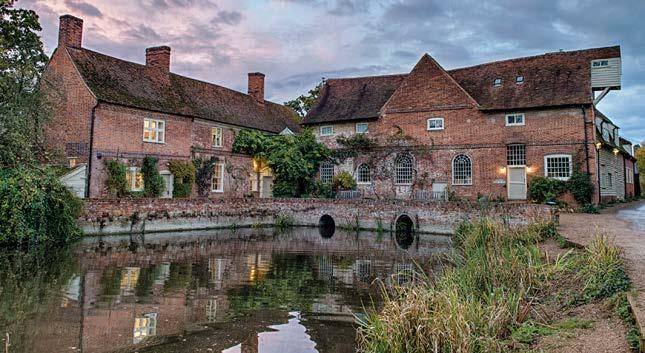
JOHN CONSTABLE’S Suffolk
A gentle walk through the heart of “Constable Country”, crossing the Dedham Vale and following the River Stour, reveals scenes that remain largely unchanged from when John Constable immortalised them in his iconic oil paintings more than 150 years ago.
The landscape painter held an unbounded affection for his native Suffolk countryside and there is much to uncover when exploring the area on foot.
Willy Lott’s Cottage
Of all the artworks by John Constable, The Hay Wain is probably the most well-known. Painted in 1821, it depicts a harvest wagon crossing the River Stour and, on the left, Willy Lott’s Cottage – a house
Flatford Mill
that belonged to the painter’s father, Golding Constable, and still stands today.
The artwork formed one of Constable’s seminal six-foot canvases, comprising views on the River Stour and painted to impress the Royal Academy. Another in the series is The Leaping Horse, pictured above.
Bridge Cottage
I associate my ‘careless boyhood’ with all that lies on the banks of the Stour; those scenes made me a painter, and I am grateful
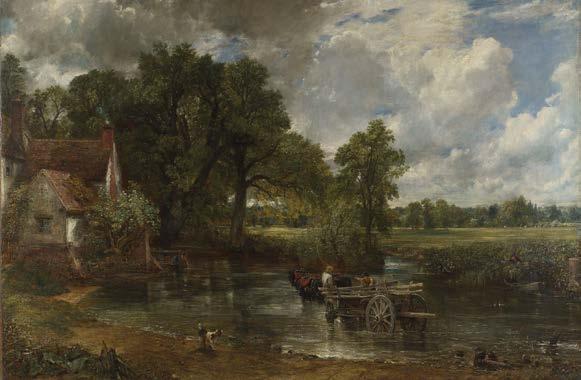
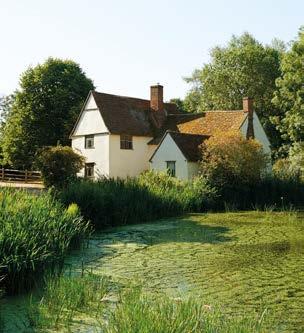
© THE NATIONAL GALLERY, LONDON; ROYAL ACADEMY OF ARTS; NATIONAL TRUST IMAGES; ILLUSTRATION: RACHAEL PRESKY
Flatford Mill
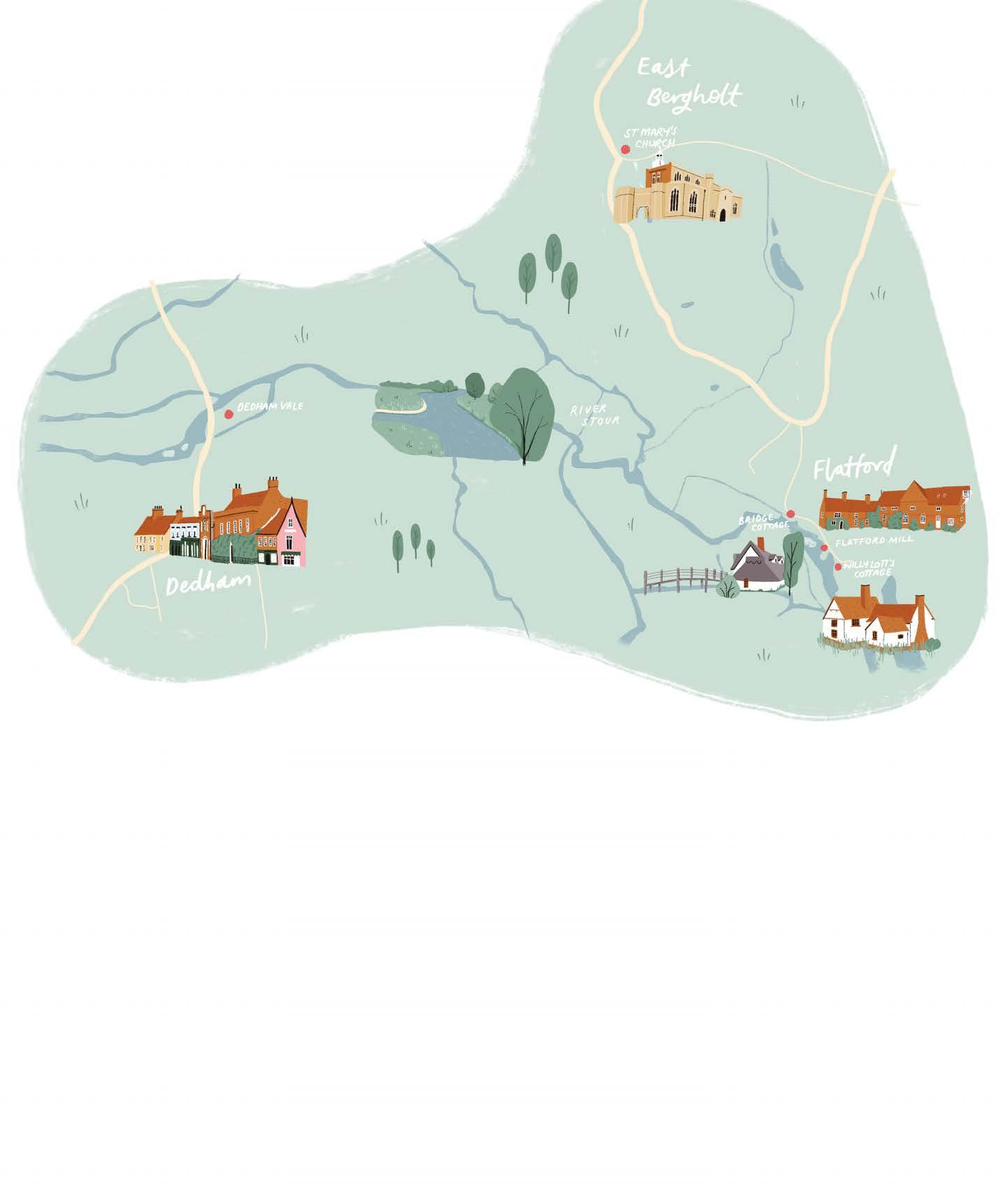
Next to Willy Lott’s Cottage is Flatford Mill, another property owned by Constable’s father and depicted in Flatford Mill (Scenes on a Navigable River).
Some say the artist’s flair for accurately painting clouds stems from having to closely observe the skies to predict the weather while he worked at this redbrick watermill as a teenager.
Bridge Cottage
A prosperous miller, Golding Constable also owned Bridge Cottage in Flatford. Tenants would have collected tolls from barges passing through the lock, but today it’s home to a tearoom and exhibition on the artist. You can also see the cottage in Constable’s 1813 painting Boys Fishing.
Dedham Vale
Dedham Vale’s charms did not escape Constable’s attention. The view in his artwork The Vale of Dedham can be seen from Gun Hill, looking towards Dedham Church.
With its thick application of white paint that enhances the shimmering light, this painting prompted Constable’s election to the Royal Academy in 1829.
East Bergholt
Constable was deeply attached to his birthplace, East Bergholt House, and it appears in his c.1809 painting of the same name. Demolished in the early 1840s, today a plaque marks where the house once stood.
Across the road is St Mary's Church, where his parents and Willy Lott are buried and where his wife Maria Bicknell's grandfather was once a rector.
Also nearby, in Cemetery Lane, is Moss Cottage, the first studio the artist rented for four- and-a-half old pennies a year. Willy Lott’s Cottage
John Constable, The Hay Wain, 1821, oil on canvas, 130.2x185.4cm
St Mary’s Church, Dedham
Another church not to miss is St Mary’s in Dedham, as on display inside is one of John Constable’s three religious artworks, The Ascension. The church’s 131-foot tower also appears in some of Constable’s other paintings. For more details on the area and a map of the walking tour, visit www.nationaltrust.org/flatford
LOWRY’S Key Dates

1887 Born in Stretford 1905 Studied at the Manchester School of Art 1910 Became a rent collector for the Pall Mall Property Company 1915 Began evening classes at Salford School of Art c.1935 Made his first trip to Berwick-upon-Tweed 1939 First solo exhibition in London 1952 Retired from the Pall Mall Property Company 1955 Elected as an Associate Member of the Royal Academy of Arts 1976 Died at Woods Hospital, Glossop, Derbyshire
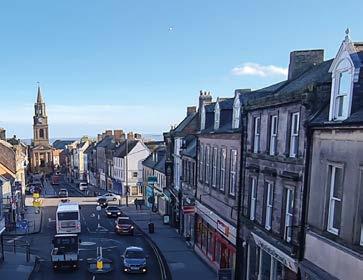
LS Lowry, On the Sands, Berwick, 1959, oil on canvas, size unknown
LS LOWRY’S
Berwick-upon-TweedWhen you think of LS Lowry, Dewar’s Lane industrial scenes of northwest and Sally Port England are bound to come to Depictions of quiet, cobbled mind. But less well-known are lanes are a rarity among the seascapes and cobbled Lowry’s work, yet he was lanes the artist painted while fascinated by the ancient visiting Berwick-upon-Tweed. alleyways of Sally Port and
Lowry first travelled to the Dewar’s Lane. On the trail’s 18 Northumberland town in the interpretation panels, you can mid-1930s, after his doctor see how the artist drew and suggested he take a break painted scenes such as these. from the strain of looking after his bedridden mother. He Elizabethan walls would return many times. In Sally Port, you can spot an
To see 18 local sites related archway passing under the to the artist, simply follow the town’s Elizabethan walls, also town’s three-mile Lowry Trail. of interest to the artist due to
Town Hall and Marygate
Sally Port
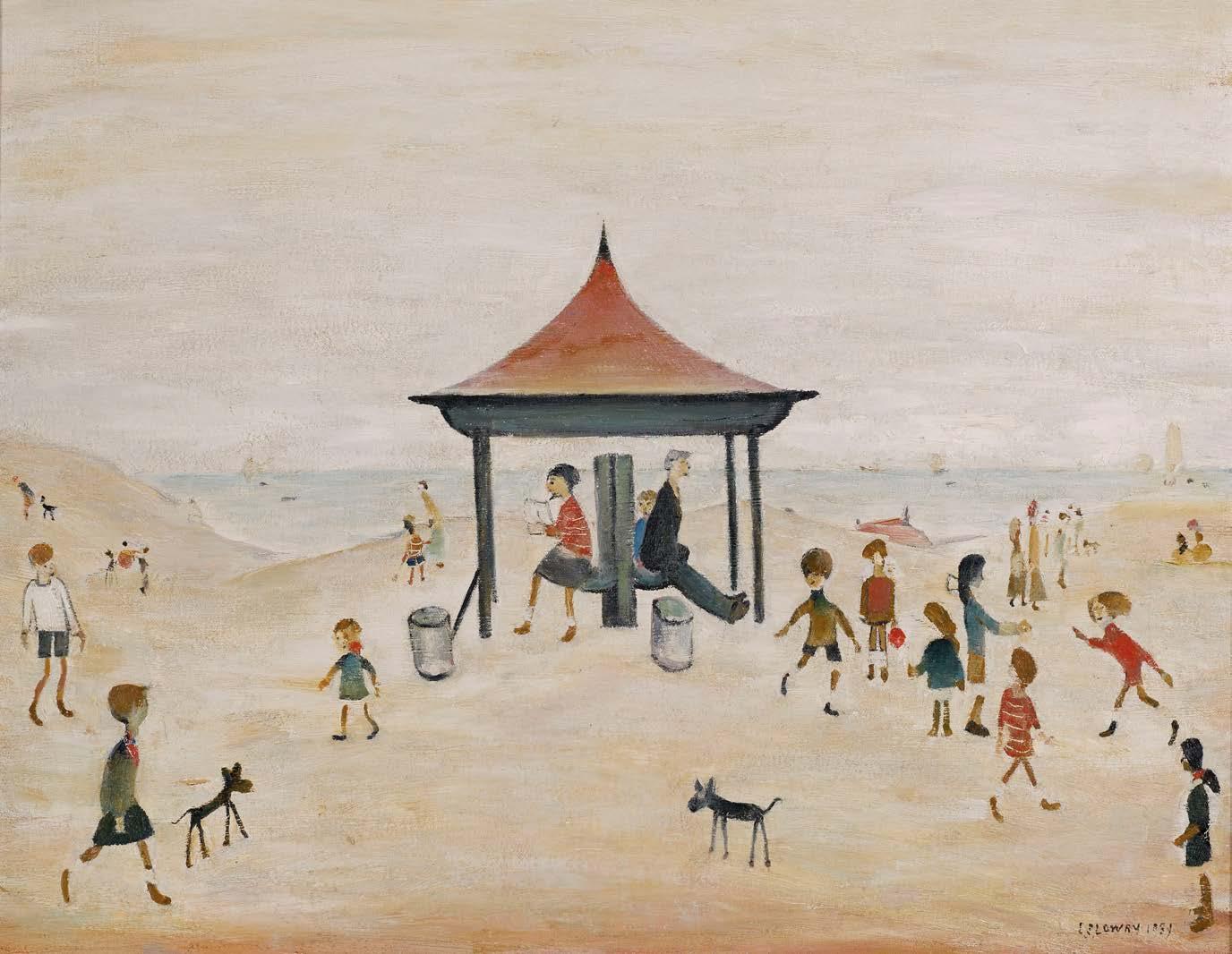
I’ve always been fond of the sea... How wonderful it is, yet also how terrible
the way they encircle Berwick. You may have already noticed the low walls, fences and other barriers in the foreground of many of Lowry’s paintings.

© ICEBOOM13; THE ESTATE OF LS LOWRY; THE LOWRY COLLECTION, SALFORD; ILLUSTRATION: RACHAEL PRESKY
Town Hall
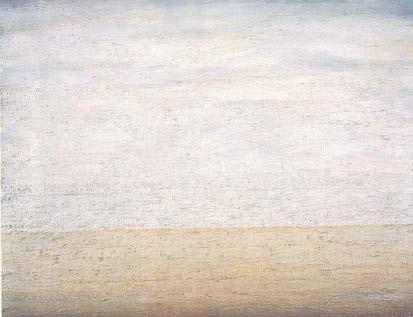
The Georgian Town Hall’s 150-foot tower appears in works such as A Market Place, Berwick-upon-Tweed and Old Berwick (Strother’s Yard). The latter’s composition [seen in the panel pictured below] with the lone tower – a common motif in his work – is thought to symbolise Lowry’s loneliness.
With its harsh geometry and mysterious figures, the painting exudes an air of apprehension, despite it being one of Lowry’s favourite corners in town.
Bridge End
The town hall’s tower also appears in Bridge End, which, alongside Old Berwick (Strother’s Yard), appeared in Lowry’s first London solo show in 1939. The painting is based on a pencil sketch the artist drew while sat on the parapet of Berwick’s Old Bridge, and with flashes of red (known as his favourite colour), lively figures and pets, it evokes a much more upbeat mood.

Tweedmouth
Busy, enclosed yard scenes were a go-to subject for Lowry and he captured one off Main Street (across the river in Tweedmouth) in his 1943 painting Old Property. The flagpole and smoking chimneys appear to be products of the artist’s imagination, while the solitary observer separated from the action by the kerb resembles Lowry himself.
The Pier
From Pier Road, Lowry sketched Berwick’s pier and lighthouse in 1956 and the scene remains much the same today. Behind the pier there is a red-roofed pavilion, the setting for On The Sands, Berwick-upon-Tweed.
The artist once said: “Poverty and gloom. Never a joyous picture of mine you’ll see.” Yet this jolly seaside scene is one exception.
Spittal
Lowry had a lifelong fascination with the sea, and would walk along the Spittal promenade seeking inspiration for works like 1960’s Spittal Sands – a joyful, impressionistic beach scene painted with pastel hues and thick encrusted paint. It’s here he also set his 1964
LS Lowry, Seascape, 1952, oil on canvas, 39.5x49.3cm
painting, Girl in a Red Hat.
Despite enjoying the coast, he was rather unnerved by the sea. This attitude may explain his empty seascapes (1942’s The Sea and 1952’s Seascape) which capture the ocean’s mystery and infinity. For more details on the Lowry Trail and to download a map visit www.visitberwick.com
Sir Stanley Spencer, The Resurrection, Cookham, 1924’27, oil on canvas, 274.3x548.6cm
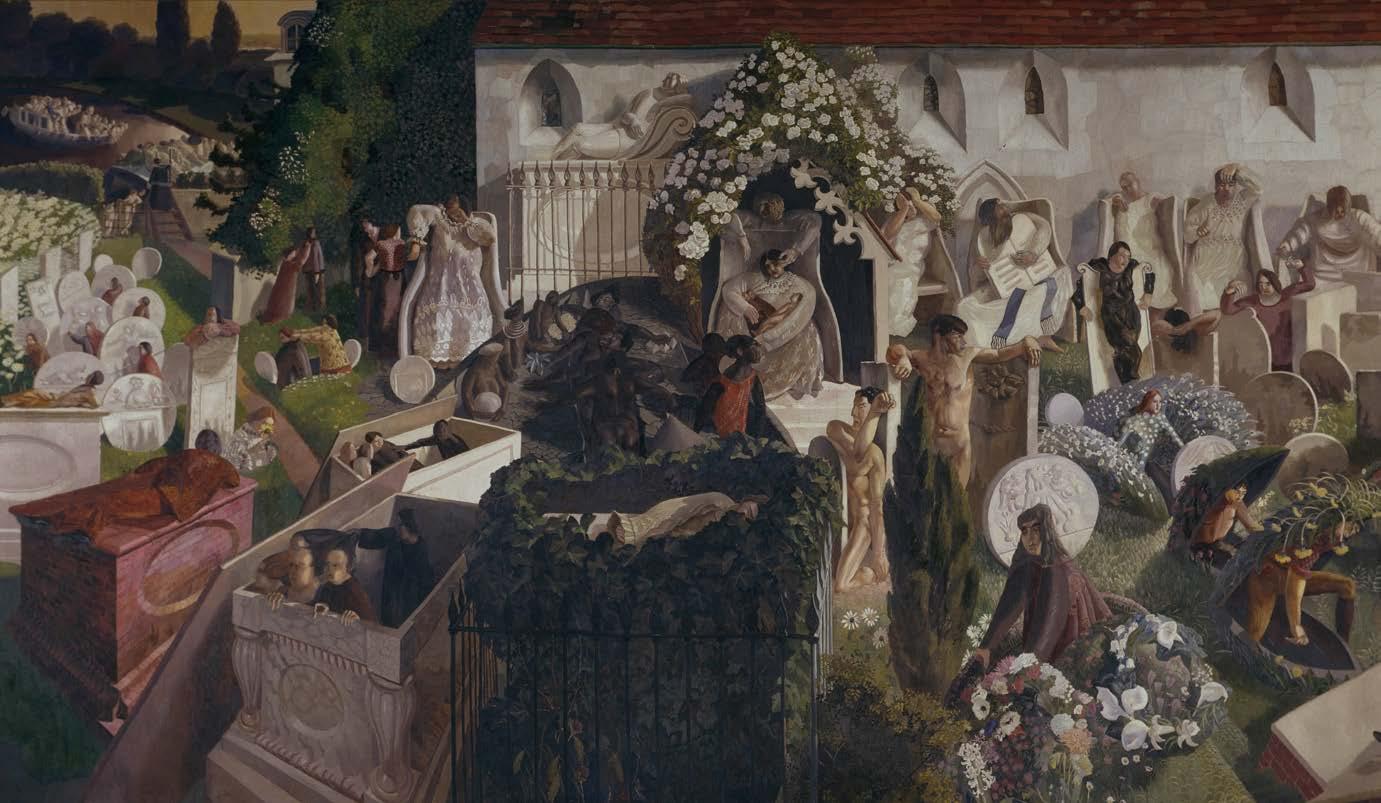
SPENCER’S
Key Dates
1891 Born in Cookham, Berkshire 1908-’12 Studied at the Slade School of Art 1915-18 Enlisted in the Royal Army Medical Corps 1925 Married Hilda Carline 1927 First solo exhibition at Goupil Gallery in London 1932 Moved back to Cookham 1937 Divorced by Hilda and married Patricia Preece 1940 Commissioned as an official war artist 1945-’59 Lived at Cliveden, Cookham Rise 1959 Died at Canadian Memorial Hospital, Berkshire
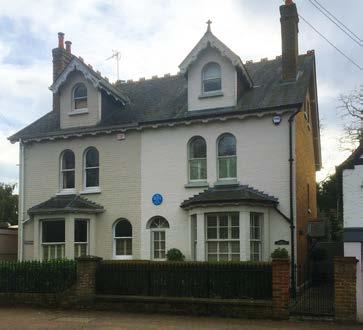
© TATE; NATIONAL TRUST/CHRIS LACEY/HUGH MOTHERSOLE; ESTATE OF STANLEY SPENCER; STANLEY SPENCER GALLERY; ILLUSTRATION: RACHAEL PRESKY
Cookham STANLEY SPENCER’S
When Stanley Spencer studied at the Slade School of Art, he earnt himself the nickname “Cookham”, such was his adoration of the Berkshire village in which he was born – and spent most of his life.
The visionary painter set many of his acclaimed biblical scenes among the Cookham streets and along the banks of the Thames, and these spots can be visited while on an hour’s walk through the village.
Ferry Hotel
The riverside lawn of the Ferry Hotel was the setting for the artist’s colourful painting Dinner on the Hotel Lawn. It forms part of a larger series which portrays the resurrection in the context of a regatta.
Odney Club
In the wall near the entrance to the Odney Club are two round, porthole-like windows that form a backdrop to the 1939 work, Girls Returning from a Bathe.
Cookham Church
The young Stanley Spencer was said to be fascinated by the churchyard, and it was here that he set one of his key artworks, The Resurrection, Cookham (now on show as part of Tate Britain’s “Walk Through British Art” display).
A stone angel still in the churchyard appears in 1953’s The Angel, while inside the
RIGHT Sir Stanley Spencer, Swan Upping at Cookham, 1915-’19, oil on canvas, 148 x116.2cm Fernlea



church is where a 15-year-old Spencer drew the now famous pen-and-ink drawing, Roy.
The River Thames
Sitting in church one Sunday morning in July, Spencer could hear the annual Swan Upping ceremony taking place outside on the riverbank. It inspired his painting Swan Upping at Cookham (on show as part of Tate Britain’s Stanley Spencer display), which he started in 1915 but could not finish until back from the war in 1919.
Cookham Moor
This idyllic area is the site of several of Spencer’s artworks, including 1936’s Cows at Cookham and 1937’s Cookham Moor. In his later years, the artist painted landscapes here for commercial necessity.
Cookham War Memorial
The war memorial is depicted in 1922’s Unveiling Cookham War Memorial and 1937’s A Village in Heaven. Built in 1921, it commemorates (among others) the death of Spencer’s brother Sydney.
High Street
Halfway up the High Street, a blue plaque marks Fernlea, the house where Spencer was born and lived with his family for many years. The artist looked upon the road as the nave of a church and made it the setting for many of his paintings, such as 1920’s Christ Carrying the Cross and 1933’s Sarah Tubb and the Heavenly Visitors.
Berries Road
Off the High Street, this road is where Spencer painted the view of Cookham in his 1936 artwork Bellrope Meadow and you can also see the tree that appears in 1938’s The Magnolia Tree in the front garden of Westward House.
Stanley Spencer Gallery
Converted from a chapel the artist attended as a child, the Stanley Spencer Gallery faces the Tarry Stone (depicted by the artist in 1929). Many works mentioned above are on show here, making it a brilliant finale to a walk around the village. For further details, visit www.cookham.com and www.stanleyspencer.org.uk
Holy Trinity Church
Cookham Moor
When I left Slade, and went back to Cookham, I entered a kind of earthly paradise
